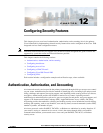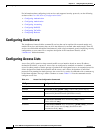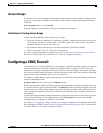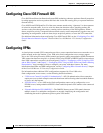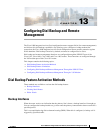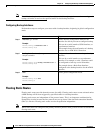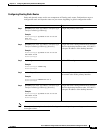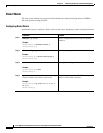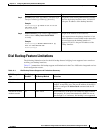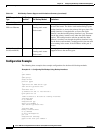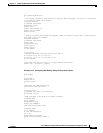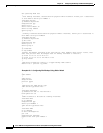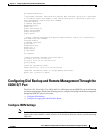
13-3
Cisco 1800 Series Integrated Services Routers (Fixed) Software Configuration Guide
OL-6426-02
Chapter 13 Configuring Dial Backup and Remote Management
Dial Backup Feature Activation Methods
Configuring Floating Static Routes
Static and dynamic routes are the two components of floating static routes. Perform these steps to
configure the static and dynamic routes on your router, beginning in global configuration mode:
Note When dynamic routing is activated, the floating static route depends upon routing protocol
convergence times.
Command Purpose
Step 1
ip route prefix mask {ip-address | interface-type
interface-number [ip-address]}
Example:
Router(config)# ip route 0.0.0.0 0.0.0.0
22.0.0.2
Router(config)#
Assigns the primary static route.
Step 2
ip route prefix mask {ip-address | interface-type
interface-number [ip-address]} [distance]
Example:
Router(config)# ip route 0.0.0.0 0.0.0.0
192.168.2.2 150
Router(config)#
Assigns the lower routing administrative distance
value for the backup interface route. 192.168.2.2
is the peer IP address of the backup interface.
Step 3
router rip
Example:
Router(config)# router rip
Router(config)#
Enables RIP routing.
Step 4
network ip-address
Example:
Router(config)# network 22.0.0.0
Router(config)#
Defines the primary interface network. 22.0.0.0 is
the network value of the primary interface.
Step 5
ip route prefix mask {ip-address | interface-type
interface-number [ip-address]} [distance]
Example:
Router(config)# ip route 0.0.0.0 0.0.0.0
192.168.2.2 150
Router(config)#
Assigns the lower routing administrative distance
value for the backup interface route. 192.168.2.2
is the peer IP address of the backup interface.





